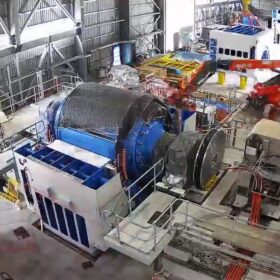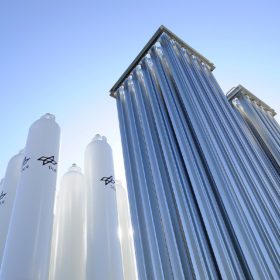The Hydrogen Stream: Rolls-Royce unveils hydrogen combustion engine for CHP
Rolls-Royce has started developing a hydrogen combustion engine for combined heat and power (CHP) systems in Germany, while Lhyfe has installed a 1 MW electrolyzer for Deutsche Bahn.
Renewables, grid flexibility could lead to electricity price drop of 25% by 2030
A new report by SolarPower Europe finds that more renewables, electrification and flexibility can boost European competitiveness, slashing average day-ahead energy prices by a quarter in the next six years and a third by 2040.
Australian grid operator to boost system strength with synchronous condensers
Transgrid – the owner of the power grid in New South Wales, Australia – aims to roll out up to 14 synchronous condensers and 4.8 GW of batteries with “grid-forming” capability to stabilize the electricity grid as coal-fired power plants retire and more renewables come online.
Component sizing key for upscaling high-temperature heat pumps
A group of researchers has investigated how high temperature heat pumps may be upscaled for industrial applications and has found that larger setups promise higher efficiency. They also found that smaller setups show a better coefficient of performance resulting from design effects.
Sungrow executive dampens hopes for imminent storage boom in Italy
Javier Izcue, vice president SG Europe at Sungrow, tells pv magazine that Italy will install 30 GW of batteries by 2030, but notes that the boom is not looming in the near term, as previously predicted.
Elements Green secures approval for 360 MW/720 MWh storage project in UK
UK-based solar and energy storage developer Elements Green has secured planning consent for its Staythorpe Battery Energy Storage System (BESS) project in the UK. The system will be colocated with a massive 800 MW solar farm.
Home energy management systems: Compatibility, good forecasts and efficiency
The quality of home energy management systems is a concern for the industry. More than 300 participants at the pv magazine Focus Event in the conference center of the Munich Trade Fair Center made this clear. To provide a glimpse into the “black box,” manufacturers, scientists and users discussed the most important criteria.
Fire at South Korea primary lithium battery factory kills 22
At least 22 people, most of them foreign nationals, were killed in a massive fire at a South Korean factory that manufactures non-rechargeable lithium batteries in Hwaseong city, just south of Seoul. The cause of the blaze is still being investigated.
Israel to provide incentives for hybrid solar inverters
Israel’s Ministry of Energy says it will exempt hybrid solar inverters from purchase tax and customs duties. It claims that these policy mechanisms will help during energy emergencies.
Fraunhofer IAO, DHBW Heilbronn examine decentralized hydrogen storage
Researchers have analyzed various storage options for green hydrogen, such as in neighborhoods, at company locations and on campus grounds. Their study provides an overview of the respective advantages and disadvantages of physical, chemical and pure hydrogen storage.










